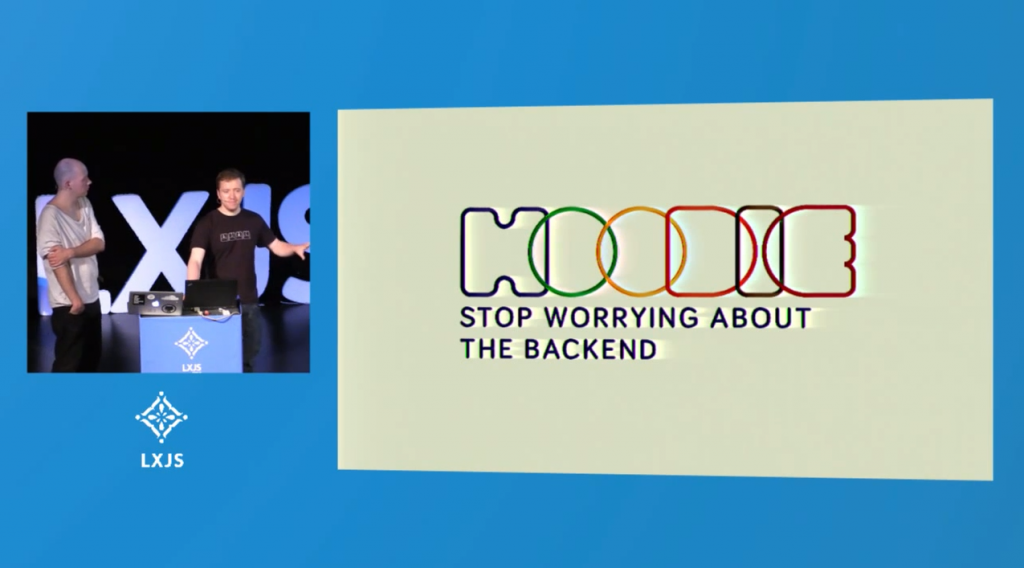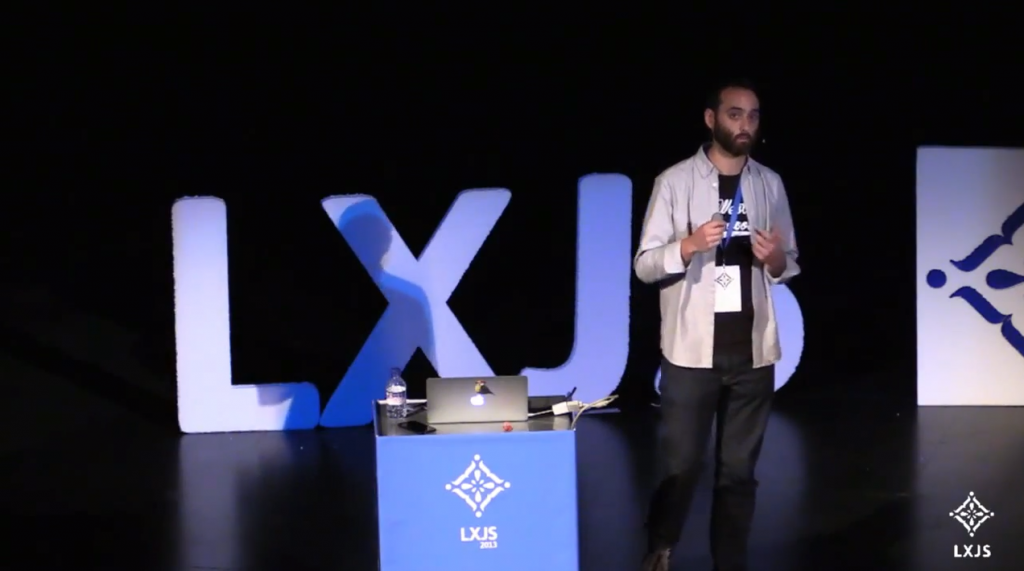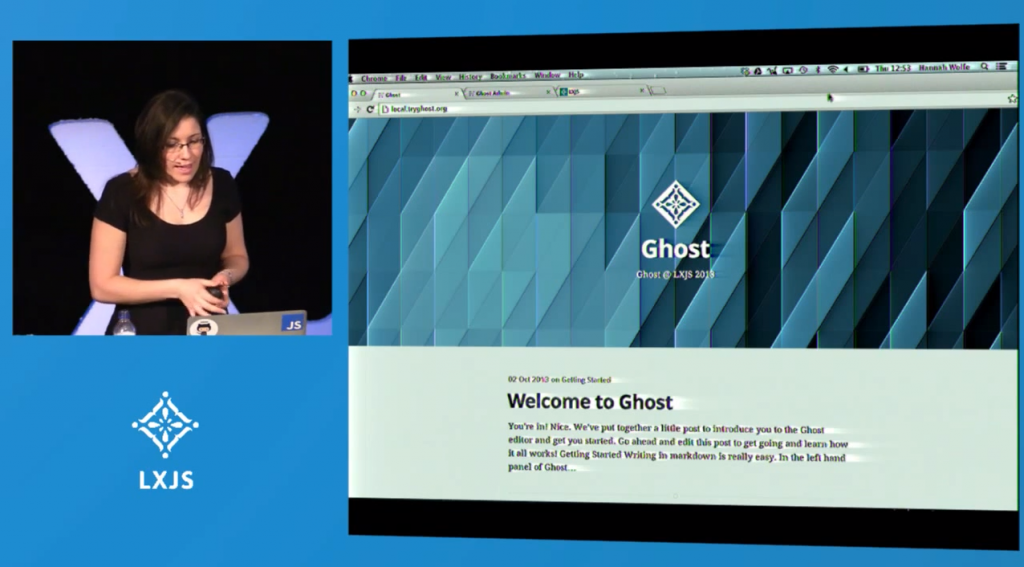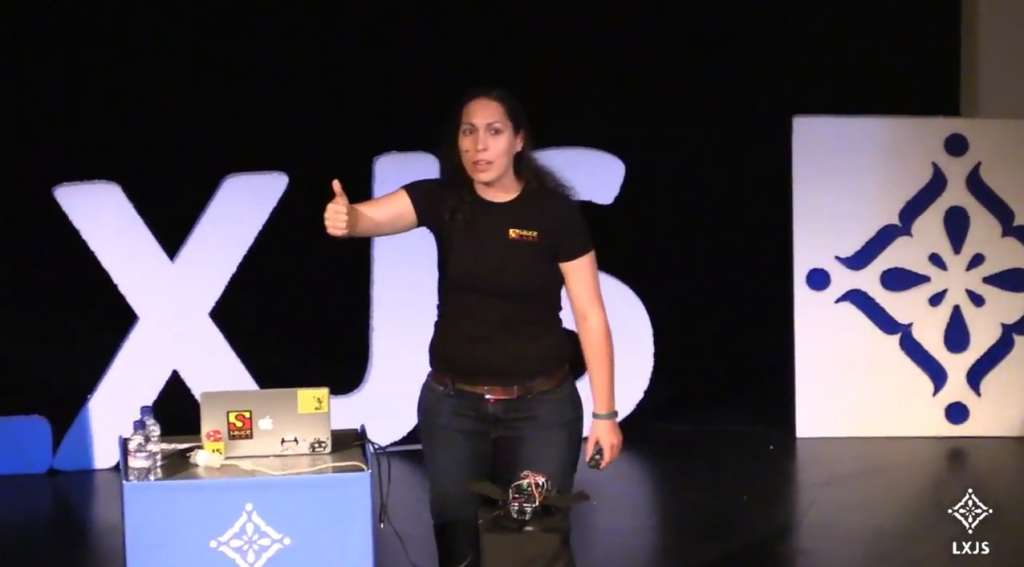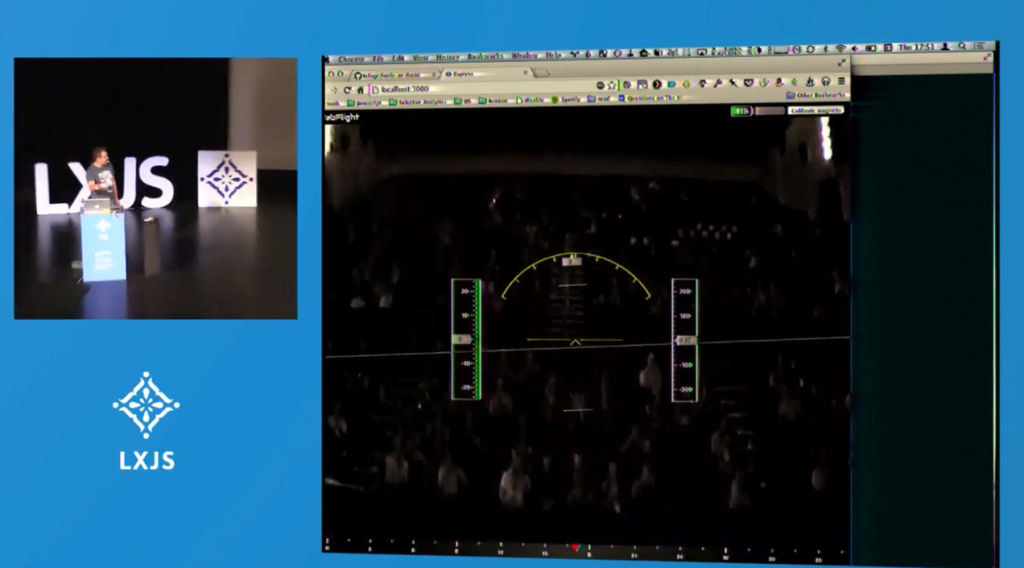Day two of LXJS started slightly later than planned due to some of the speakers having a little bit too much fun on a boat party the night before (I would like to note that no members of the Caplin team had any fun on the boat party… and were all wide awake for day two…). This was also the day that we finally realised that someday the robots will take over and there will be no escape.
One of the first talks to capture our attention on day two was a talk by Caolan McMahon and Alex Feyerke. They came to show us Hoodie. Hoodie is a JavaScript Library which eliminates the need for a developer to worry about the backend and allows a developer to add real value to a project quickly. In a fairly slick live demo, the developers showed how quick it really was to add features.
They added a simple sign in system that only took a few lines of code and then added a simple persistence system which again only took a few lines of code and saved the state of a drawing canvas on the main body of the example web page. This was then made to be synchronised so that if you were logged in elsewhere you could see the drawing being created and vice versa. They then showed the ability to share things easily with friends in only a few lines of code. This was a very simple, but impressive talk which really intrigued the audience and it seems like quite a few people will be trying it out soon. All of Hoodie is open source so I suggest that you take a look at it now.
One of the most interesting JavaScript technologies that I have been hearing about recently is Meteor, a full stack JavaScript framework that I have not yet had the pleasure of sampling, but luckily that was the topic of our next talk by Oli Evans. The first demo that was shown was a map of the world which had a pin stuck in it for every user on that webpage with their exact location, this was very cool and took less than 200 lines of code to pull off.
The next demo that we were shown was very simple multi user blackboard web application, which is available to view here. This was made during the Meteor meet up in London, was made in less than an hour and was less than 50 lines of code. The meet ups are now happening on a monthly basis and are a time to show off what you have been able to achieve using Meteor. The number of people attending these is now growing rapidly and the number of people backing it seems be getting larger. This is definitely a technology to watch over the next 12 months. Who needs Java developers anyway…
Hannah Wolfe was the next person to capture our attention with a new blogging platform called Ghost. The aim of Ghost was to create an open source blogging platform with a minimal user interface to not distract bloggers from their main aim – to blog. The project started life on KickStarter and attempted to raise $25,000; this was achieved within the first day, and by the end of the campaign it had raised just shy of $200,000. Once the funding was secured they started work on developing their vision, and we were shown a developers preview of the very minimal UI, which I must admit did look very appealing. It doesn’t have any of the usual buttons that you would expect from a platform such as WordPress, which clutter up the interface, it relies entirely on key combinations to control the writing of the blog. The project is being released on GitHub on the 14th of October and they should have a hosted service coming slightly later on in the year.
Eventually the topic changed to robotics where some of most interesting and fun talks of the conference took place. The first talk was by a very experienced and passionate lady called Raquel Valez, who had worked at some very cool places such as NASA before now working at SourceLabs. She gave a brief history of robotics showing the transition from traditional languages for programming robotics such as C, C++ and python to modern day where Node.js is used, mainly because of some of the great libraries that have arrived over the past few years culminating in a library called Johnny5. This library makes it so easy to quickly get something working with real hardware. Raquel then introduced us into her latest creation – BatBot. BatBot is a cute NodeBot that has a very simple goal to use sonar to identify objects positions and direction, which was shown to be working in a live demo. This was a great introduction to robotics and it was good to learn the history of the machines that will eventually take over.
The next talk on robotics was given by Gilles Ruppert a developer who had brought along a parrot AR drone NodeCopter. This is one of the classic NodeCopters that can be purchased online and it has a huge community around it. You can also purchase spare parts for it easily and cheaply and by the look of it you made need quite a few spare parts while developing. You can connect to the NodeCopter via Wi-Fi as all commands are sent using UDP and if you using the node library ‘ar-drone’ you can control the drone with commands so simple even a child could do it.
Gilles then went on to show us the various means of controlling his drone that he has developed. The first was a simple game controller that he had written in less than 200 lines of code, and basically mapped the various functions of the drone to the buttons of the controller. The second was a lot more experimental using the leap motion to lock onto his hand and through various actions the drone would move, this is also the first time that we saw the drone’s camera on the stage screen, showing us exactly which victim was in his sights. Although happily enough the first victim of the drone was only the back of the stage as the drone ploughed straight into it due to the haphazard nature of the leap motion. The second attempt was better executed and showed the potential of both the drone and the leap motion being used together with some hand gestures maneuvering the drone into some very cool 360⁰ spins.
The final talk of the show was a very passionate talk given by the keynote speaker Adam Brault. His talk centered on his own life and experiences growing up, and as a developer. In growing up Adam felt weak and was bullied as a child, he eventually found computing and started to develop small applications in QBasic, but was fearful of talking to anyone about his passion. When he eventually told people about his beloved QBasic he was mocked for using such an outdated and basic language, this killed his confidence with development and he attempted to stay away from it, in time he ended up working on very basic HTML templates but did not want to write what he would consider ‘code’.
It wasn’t until a friend (Adam Bladwin, also speaking at LXJS about node security) pushed and gave him confidence to program some JavaScript that he finally became a developer. He talked about how his weakness was due to defensiveness and comparison with others and how we should all strive to change this. We need to change being defensive into being responsive and changing comparison to compassion.
He went on to describe that he feels the response of anger is simple fear screaming out through a megaphone and that we should gain strength by speaking our fears out to others. His presentation ended with him walking off the stage with his presentation still rolling on, which really has to be seen to be understood. This ended with a standing ovation for his talk and the conference in general.
It was a great conference with some very talented speakers. There was a great community atmosphere about the whole conference that was really great to be a part of. I know that one of the first things I will be doing when I get back to London is to purchase my own NodeCopter to protect me from the inevitable onslaught of flying death machines that will never be stopped* in the near future…
* The onslaught may be stopped by the current battery life of the beasts.

